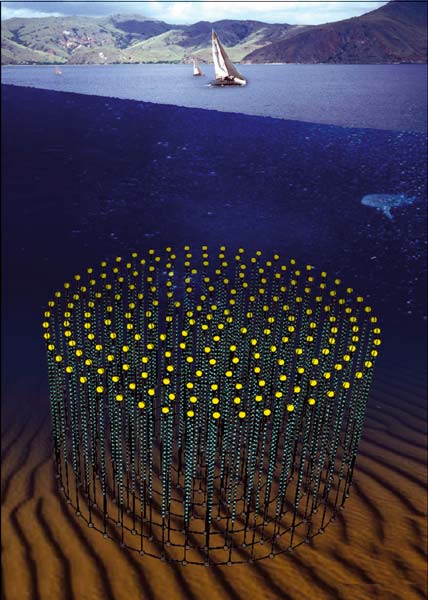
Image credit: ASPERA/Nikhef/M Kraan.
European funding agencies have welcomed the priorities for the future of astroparticle physics defined by the scientific community and have accepted the recommendations included in the update of the European roadmap for astroparticle physics, published on 21 November 2011.
This update comes after the first ever European roadmap for astroparticle physics, published in 2008. The goal was to define the research infrastructures necessary for the development of the field: the “magnificent seven” of astroparticle physics.
The roadmap is the product of a collaboration between the AStroParticle European Research Area (ASPERA) network of European national funding agencies responsible for astroparticle physics and the Astroparticle Physics European Coordination (ApPEC). “The update of the roadmap provides a better picture of what will come first on the menu,” said Christian Spiering, chair of the ASPERA and ApPEC Scientific Advisory Committee that produced the roadmap. Funding for each project is still subject to national decision-making processes and the roadmap recognizes that not all funding agencies will necessarily support each project.
The strategy reaffirms the support required for current experiments and planned upgrades, in particular in the areas of gravitational waves, dark-matter searches and the measurement of neutrino properties, as well as for underground and space-based infrastructures. The mid-term planning (2015–2020) includes four large projects to be constructed starting from the middle of this decade.
In the domain of tera-electron-volt gamma-ray astrophysics the Cherenkov Telescope Array (CTA) is clearly the worldwide priority project. CTA is an initiative to build the next-generation ground-based, very high-energy gamma-ray observatory, combining proven technological feasibility with a guaranteed scientific perspective. Some 800 scientists from 25 countries have already joined forces to build it.
KM3NeT, the next-generation high-energy neutrino telescope in the Mediterranean Sea, is in its final stages of technology definition, with prototype deployment expected within the next 2–3 years. A project selected by the European Strategy Forum on Research Infrastructures, it is in an EU-funded preparatory phase, having obtained substantial regional funding.
LAGUNA is a megatonne-scale project for low-energy neutrino physics and astrophysics. It is at the interface with the CERN European Strategy update to be delivered in early 2013 and is currently the subject of an EU-funded design study.
Last, but not least, is a ground-based cosmic-ray observatory following in the footsteps of the Pierre Auger Observatory in Argentina. On longer time scales, similarly large infrastructures in the domain of dark energy or gravitational wave detection are being considered.





